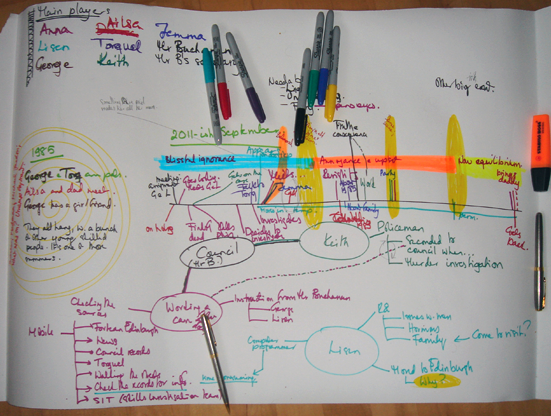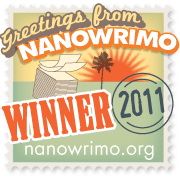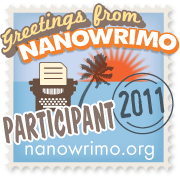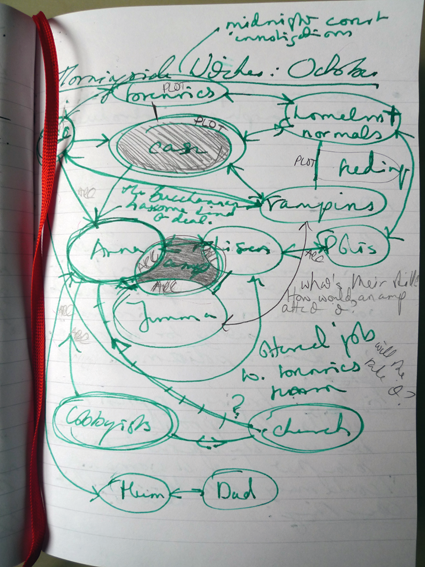I read something the other day – a snippet of freely given internet advice – which said something like “don’t start anything until you’ve finished what you’re working on now”.
Good advice.
But a lot more difficult to follow than you might think.
The way I work, I have several projects on at the same time. Some are very short, some are longer and some are novel lenght. (I boast. This year is the first time I’ve got one of those on the go. I have yet to finish one outside of NaNoWriMo.) I have an idea, I take some notes, let it steep and ferment and then I write a draft. Then I leave it for a while – sometimes a very long while – before reading it and performing surgery. Once it’s in some kind of shape, it goes to my first reader for feedback. A brief hiatus follows.
After first reader, I make changes to the piece before sending it to a writers group or friendly editor (second review). Then it sits. Sometimes for hours, sometimes for months. When I finally pick it up again, it is to do a final edit. The final edit isn’t as final as it sounds. It can take several rounds to get to the final-final version. And even that isn’t really final.
I send the story out and depending on what comes back, I might make further changes before sending the story out a second time. And so it goes.
What was the advice again?
Don’t start anything before you’ve finished what you’re working on.
When you get going, coming up with ideas is a lot easier than finishing stories. Ideas take seconds; finishing a story takes hours, days and weeks.
For this year, I set myself the task of completing one story a month. I’m two months behind and I have eight stories on the go. One is on the concept stage, meaning, I’ve got notes and ideas but I haven’t written words yet. Three have some words, but not their full complement. One has been read by my first reader and the remaining three have been reviewed by my writers groups. If I sat down and finished editing those three I would catch up on my goal. Easy peasy. There are a host of reasons for why I don’t, not one of them particularly good.
It’s not always possible to work on only one thing at a time. Take my word for it: I freelance. External deadlines are useful to force you to finish things. Unfortunately, some of my works in progress don’t have markets, never mind deadlines. So I make excuses, allow myself to lose insterest and move off to other projects. To some extent, I think that’s OK. Not everything I write is worth finishing. Some of it wasn’t worth starting in the first place. That’s part of what this year is about: learning where to put my efforts. Still, the things that are sitting there, twice reviewed, I clearly like well enough to finish.
So I should finish them. Because drafts can’t be published.


 This week I made a number of important changes. Not to the plot, as such, but to how I work.
This week I made a number of important changes. Not to the plot, as such, but to how I work.